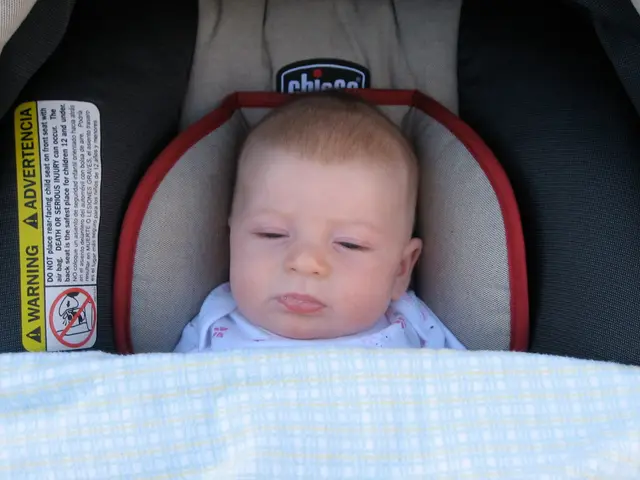Children's Expressions of Affection: Varied Attachment Styles in Youngsters
Interactions between kids and their caregivers, especially during the early years, significantly mold the child's attachment styles. These ties play a major role in shaping their sense of security and trust in relationships, and they can have a lasting impact on the child's life.
Understanding the different attachment styles in children is crucial for recognizing and addressing their emotional needs. Let's dive deeper into each style:
Secure attachment
Children with a secure attachment style feel loved and safe by their caregivers, and they trust that their needs will be met. They're confident exploring their surroundings, and this healthy attachment lays the foundation for building positive relationships and fostering independence.
Insecure-avoidant attachment
On the surface, these kids may seem self-reliant, but they often suppress their need for emotional closeness and intimacy with their caregivers. This can lead to difficulties with regulating emotions and forming deep connections with others later in life.
Insecure-ambivalent attachment
These children crave constant reassurance and attention from their caregivers and may fear abandonment or rejection. This attachment style can result in difficulties with emotional regulation and forming healthy relationships characterized by mutual trust and respect.
Disorganized attachment
Kids with a disorganized attachment style struggle to form consistent patterns due to inconsistent or traumatic caregiving experiences. They may display a mix of avoidant and ambivalent behaviors and may find it challenging to regulate their emotions and establish secure relationships in adulthood.
Attachment styles are like the emotional blueprints that children begin drafting during their early years, primarily through interactions with caregivers like their parents. Here's how they form:
Responsive care
The foundation for a secure attachment is responsive caregiving. This means that caregivers need to be attuned to their child's needs and respond promptly. They offer comfort during distressing times, cheer for accomplishments, and guide them during explorations. Through consistent, dependable care, children learn they are valued, their feelings are acknowledged, and their needs matter.
Emotional availability
Caregivers who are emotionally available create a safe environment for children by being mentally engaged in their interactions. Emotional availability involves listening, empathizing, and validating children's feelings. This emotional connection fosters a child's ability to recognize and manage their emotions effectively.
Early experiences
Negative experiences such as neglect, abuse, or frequent separations from caregivers can disrupt the attachment process and lead to the development of insecure attachment styles in children. These kids may struggle with trust, intimacy, and emotional regulation as a result.
Recognizing your child's attachment style can be tricky, but there are some signs to look out for:
Pay attention to their emotions
Validating your child's emotions is essential for building a secure attachment. When your child is upset, acknowledge their feelings, and let them know you understand. By validating their emotions, you help them feel seen, heard, and understood, which are all crucial for building a secure attachment.
Notice their behaviors
Observe your child's behaviors and patterns in their interactions with caregivers. Do they seek comfort when distressed, or do they withdraw? Paying attention to their cues will give you valuable insights into their attachment style and emotional needs.
Reflect their feelings
Reflecting your child's feelings back to them helps them learn to regulate their emotions in a healthy manner. When they express sadness, anger, or joy, mirroring their emotions helps your child learn to manage their own feelings effectively.
Be consistent and responsive
Being consistent and prompt in responding to your child's needs helps them feel secure in their relationship with you, laying the foundation for healthy emotional development.
- The child's attachment styles, formed primarily through interactions with caregivers, play a major role in building positive relationships, fostering independence, and shaping their emotional well-being.
- Children with secure attachment styles feel loved, safe, and trust that their needs will be met, which lays the foundation for positive relationships and independence.
- Insecure-avoidant children may suppress their need for emotional closeness, leading to difficulties with regulating emotions and forming deep connections later in life.
- Insecure-ambivalent children crave constant reassurance and may struggle with emotional regulation and forming healthy relationships characterized by mutual trust and respect.
- Kids with a disorganized attachment style struggle to regulate their emotions and establish secure relationships in adulthood due to inconsistent or traumatic caregiving experiences.
- Responsive caregiving, emotional availability, and acknowledging a child's feelings are crucial for a child's emotional development, enabling them to develop self-esteem, regulate emotions, and establish secure relationships.
- Negative experiences such as neglect, abuse, or frequent separations from caregivers can disrupt the attachment process and lead to the development of insecure attachment styles in children, potentially affecting their mental health, anxiety, depression, and overall well-being.








